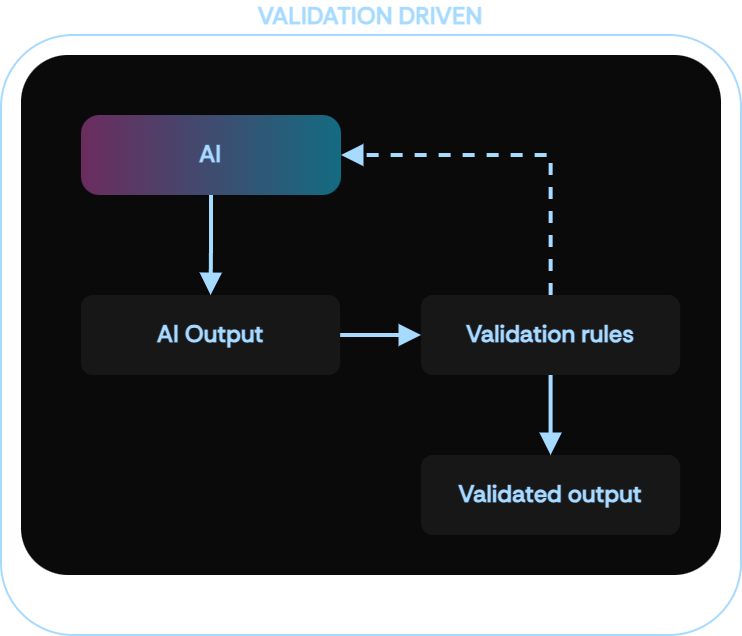In the realm of cognitive psychology, human thinking is often divided into two distinct systems: System 1 and System 2. Understanding these two modes of thinking is crucial for grasping the revolutionary potential of Generative AI (GenAI) within the current IT landscape.
System 1 vs. System 2 Thinking
System 1 thinking is intuitive, fast, and automatic. It’s the mental mode we engage when we make snap judgments, recognize patterns quickly, or respond to stimuli without conscious effort. Imagine recognizing a friend’s face in a crowd or catching a ball thrown at you unexpectedly. These actions are rapid, effortless, and often creative responses powered by System 1.
System 2 thinking, on the other hand, is deliberate, slow, and effortful. It’s the mode we use when solving complex problems, making decisions that require careful analysis, or learning new skills. Picture yourself solving a complicated math problem or planning a detailed project. These activities require focused attention and logical reasoning, hallmarks of System 2.

GenAI: A natural fit for System 1
Traditional IT systems have predominantly aligned with System 2 thinking. They are designed for reliability, accuracy, and methodical processing. These systems excel in tasks that require structured, rule-based approaches but are not known for creativity or speed. They’re the dependable workhorses of the IT world, ensuring that our data is processed correctly and our applications run smoothly.
But now we have Generative AI. GenAI, powered by Large Language Models (LLMs), embodies System 1 thinking. It’s intuitive, fast, and can handle unstructured tasks with ease. GenAI can generate human-like text, create images from descriptions, provide rapid responses to natural language queries. These capabilities make it a powerful tool for tasks that benefit from creativity, quick thinking, and pattern recognition.
GenAI in the current IT landscape
Our current technological landscape is dominated by traditional compute systems, designed with System 2 capabilities. This has led to some confusion about where GenAI fits in. The challenge lies in the fact that GenAI brings System 1 capabilities to an environment where System 2 has been the norm.
People see the potential of LLMs and GenAI but often struggle to pinpoint exactly how these cognitive capabilities integrate with existing IT frameworks. The key is recognizing that GenAI offers something fundamentally different: the ability to perform tasks that require intuition and creativity, which traditional systems are not equipped to handle efficiently.
Clear use cases for GenAI
Despite the challenges, there are clear use cases where GenAI competes with or even surpasses traditional systems. Virtual agents and natural language processing (NLP) are prime examples. These applications have historically relied on traditional compute methods, attempting to emulate System 1 thinking. However, with GenAI, these tasks find a natural fit. GenAI can understand and generate human-like responses in real-time, making interactions more fluid and lifelike.
For instance, a virtual customer service agent powered by GenAI can handle a wide range of customer inquiries quickly and efficiently, providing answers that feel natural and personalized. This contrasts with traditional rule-based systems, which may struggle with the nuances of human language and require extensive programming to cover all possible scenarios.
GenAI revolutionizing future architectures
Yes, there are instances where GenAI can replace traditional systems, but the true power of GenAI lies in its ability to bring something new in the existing IT infrastructures. By bringing System 1 capabilities into the mix, we can create new types of applications, and create applications in a total new way.
Here are a few new architectures that enable new types of applications:
Hybrid Models: Combine traditional IT systems (System 2) with GenAI (System 1) to create hybrid models. In this setup, GenAI handles creative, fast, and intuitive tasks, while traditional systems ensure reliability, accuracy, and compliance. For example, in a data analysis platform, a traditional system can generate tables and graphs, while GenAI could generate a report from this with quick insights.
Layered Approach: Use GenAI as a front-end interface for customer interaction and initial data processing, passing on more complex tasks to traditional systems. Consider an online retail platform where GenAI-powered chatbots manage customer inquiries and orders, while backend systems handle inventory management and payment processing.
But most interestingly, just like research shows that people are running 95% of the time on System 1, why wouldn’t we run traditional IT more on AI systems? It’s both more effort- and calculate-efficient to have AI handle your business rules. The big problem however is that this might be error-prone and unverified, but that doesn’t have to be a big problem, because we can build systems to verify AI.
It’s far more difficult to find a needle in the haystack, then verify a needle once it’s found. The same way it’s far more difficult to find the code that gives us a desired outcome, than to verify an outcome that an AI system gives. (from Max Tegmark interview)
Just like humans rely on falling back to System 2 faculties when our intuition provides errors, we can apply traditional computational checks to validate our error-prone GenAI outcomes.
This gives us a new architectural options, to replace traditional systems with such a validation-driven AI system.
Validation-driven: Implement feedback loops where outputs from GenAI are validated and refined by traditional IT systems, ensuring a balance of speed and reliability. For example, in medical diagnostics, GenAI could provide initial assessments and suggestions, which are then reviewed and confirmed by traditional diagnostic tools and medical professionals.

Conclusion
Generative AI is giving us very new IT capabilities by bringing System 1 thinking into a landscape dominated by System 2 systems. This shift challenges us to rethink our architectures and explore new models that leverage the strengths of both approaches. By integrating GenAI with traditional systems through hybrid models, layered approaches, and feedback loops, we can create IT solutions that are not only reliable and accurate but also intuitive, fast, and creative.
References:
Max Tegmark | On superhuman AI, future architectures, and the meaning of human existence


Leave a Reply